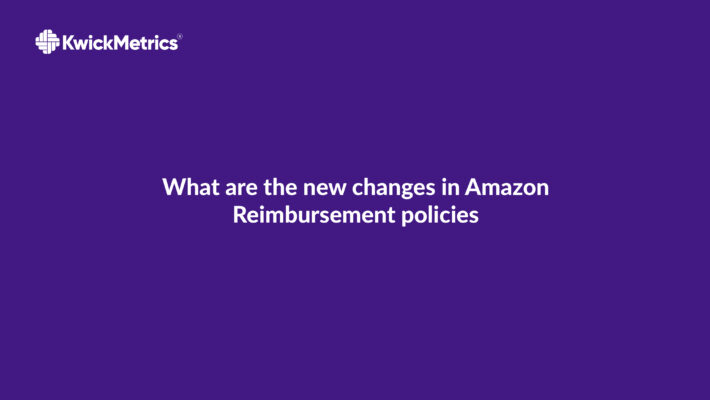Decoding WFS Fees: Simplifying the Cost of Storage & Fulfillment

Table of Contents
Embarking on the journey of e-commerce success with Walmart Fulfillment Services (WFS) is thrilling, but navigating the intricacies of its fees can be daunting. Imagine a labyrinth of costs where every decision impacts your bottom line.
Fear not! In this guide, we’ll unravel the mysteries of WFS fees, simplifying the complex world of storage and fulfillment charges. Whether you’re a seasoned seller or just starting out, understanding these WFS fees is crucial for optimizing your operations and maximizing profitability.
So, let’s embark on this journey together, decoding WFS fees to empower your e-commerce endeavors like never before.
Understanding WFS fees
Walmart Fulfillment Services (WFS) offers a comprehensive solution for sellers, handling storage and fulfillment processes to streamline operations. However, navigating the associated fees can be complex. WFS fees encompass charges for storage, fulfillment, and additional services, all of which contribute to the overall cost of utilizing the platform.
Storage fees are incurred for housing inventory within the Walmart fulfillment centers, influenced by factors such as volume and duration of storage.
Fulfillment fees cover the costs of picking, packing, and shipping orders, varying based on order complexity and volume.
Additional services, such as expedited shipping or special packaging, incur extra charges.
To effectively manage WFS fees, sellers must optimize inventory levels, streamline order processing workflows, and utilize tools for Walmart sellers and resources. By understanding these fees and implementing best practices, sellers can navigate the e-commerce landscape with confidence, maximizing profitability and success.
Check How you much have been charged by Walmart under your current shipping Plan
Understanding Storage Fees
Storage fees are a crucial component of Walmart Fulfillment Services (WFS) and represent the cost of housing inventory within the Walmart fulfillment centers.
Here’s a comprehensive breakdown of storage fees and how they are calculated:
1. Calculation Method: Storage fees are typically calculated based on the volume and duration of stored inventory. Walmart may charge sellers a fee per unit of space occupied by their inventory (e.g., per cubic foot) and may also factor in the length of time the inventory remains in storage.
2. Volume of Inventory: The amount of inventory stored in the Walmart fulfillment centers directly impacts storage fees. Sellers with larger quantities of inventory may incur higher storage fees compared to those with smaller volumes.
3. Duration of Storage: The length of time inventory remains in storage also affects storage fees. Sellers may be charged on a monthly basis for the duration of time each unit of inventory occupies space within the Walmart fulfillment centers.
4. Seasonal Variations: Storage fees may vary seasonally, with higher rates during peak periods of demand (e.g., holiday seasons). Walmart may adjust storage fees to reflect fluctuations in demand and warehouse capacity utilization.
5. Additional Services: Certain additional services, such as climate-controlled storage or special handling requirements, may incur extra charges. Sellers should consider these factors when calculating total storage costs.
Key Takeaway:
Understanding storage fees is essential for Walmart sellers utilizing WFS, as they represent a significant portion of overall fulfillment costs. By understanding how storage fees are calculated, sellers can effectively manage costs and maximize profitability within the WFS ecosystem.
Understanding Fulfillment Fees
Fulfillment fees are an integral aspect of Walmart Fulfillment Services (WFS) and encompass the costs associated with the pick, pack, and ship processes of fulfilling customer orders.
Here’s a comprehensive overview of fulfillment fees and how they are calculated:
1. Order Processing: Fulfillment fees are calculated based on various factors related to order processing, including the complexity of orders and the volume of items fulfilled. Walmart charges fees for each order fulfilled through WFS, with costs varying depending on factors such as the number of items per order and any additional services requested.
2. Pick and Pack Costs: The pick and pack process involves selecting items from inventory, packing them securely for shipment, and preparing them for delivery to customers. Fulfillment fees cover the labor, materials, and overhead costs associated with these tasks. Fees may be assessed based on factors such as the number of items picked and packed per order and the complexity of packing requirements.
3. Shipping Charges: Fulfillment fees also include the costs of shipping orders to customers. Walmart offers various shipping options through WFS, including standard, expedited, and priority shipping, each with associated fees based on factors such as package weight, dimensions, and destination. Sellers may choose the shipping method that best meets their customers’ needs while managing costs effectively.
4. Additional Services: Certain additional services may incur extra fulfillment fees. These services may include special packaging requests, gift wrapping, or expedited order processing. Sellers should consider these factors when calculating total fulfillment costs and pricing their products accordingly.
Key Takeaway:
Understanding fulfillment fees is essential for Walmart sellers utilizing WFS, as they represent a significant portion of overall fulfillment costs. By understanding how fulfillment fees are calculated and implementing optimization strategies, sellers can effectively manage costs and provide a seamless fulfillment experience for their customers.
Best Practices for Managing WFS Fees
1. Regularly Monitor Inventory Levels: Conduct frequent inventory audits to assess stock levels accurately. Adjust restocking plans based on real-time sales data and demand forecasts to avoid overstocking and minimize storage fees.
2. Optimize Packaging: Maximize space utilization within Walmart fulfillment centers by optimizing packaging. Utilize standardized packaging sizes and lightweight materials to minimize wasted space and packaging costs.
3. Monitor Long-Term Storage: Set up automated reminders for inventory nearing long-term storage thresholds. Implement inventory rotation strategies, such as first-in, first-out, to minimize long-term storage fees.
4. Utilize the WFS Fee Calculator: Familiarize yourself with the WFS Fee Calculator and use it regularly to estimate WFS fees for new products and inventory adjustments accurately. Ensure all product details entered into the calculator are precise to obtain reliable fee estimates.
By implementing these best practices, Walmart sellers can effectively manage WFS fees, optimize their operations, and maximize profitability within the Walmart Fulfillment Services ecosystem.
FAQs Related to WFS Fees
Q. How are storage fees calculated in Walmart Fulfillment Services (WFS)?
A. Storage fees in WFS are typically calculated based on the volume and duration of stored inventory. Walmart may charge sellers a fee per unit of space occupied by their inventory, factoring in the length of time the inventory remains in storage.
Q. What factors influence fulfillment fees in WFS?
A. Fulfillment fees in WFS are influenced by various factors, including the complexity of orders, the volume of items fulfilled, shipping options selected, and any additional services requested by the seller, such as special packaging or expedited order processing.
Q. Are there any additional services offered by WFS that incur extra fees?
A. Yes, WFS offers additional services such as climate-controlled storage, special packaging requests, and expedited shipping options, which may incur extra fees. Sellers should consider these factors when calculating total fulfillment costs.
Conclusion
Navigating (Walmart Fulfillment Services) WFS fees can be overwhelming, but with the insights gained from this guide, you’re better equipped to manage costs effectively. By understanding the nuances of storage fees and fulfillment fees, implementing best practices, and staying informed about optimization strategies, you can unlock the full potential of WFS while maximizing profitability. With these tools at your disposal, you’re ready to embark on a successful e-commerce journey with confidence and clarity.
Happy selling!
“KwickMetrics is your trusted tool for Walmart analytics. Optimize your WFS operations and maximize profitability with actionable insights.


